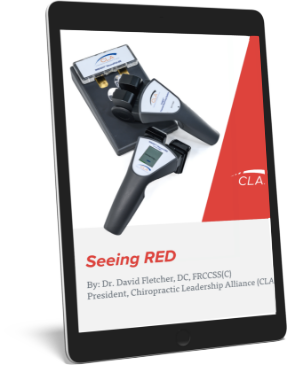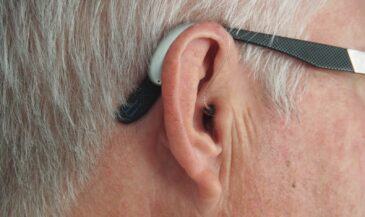By Dr. Christopher Kent
In traveling throughout the chiropractic world, I frequently encounter DCs who mindlessly regurgitate misinformation with the demeanor of one who has spoken directly with God. Tracking down the primary source of this garbage poses a formidable challenge. But in many cases, it is easy to identify the messenger a lazy chiropractic college faculty member who hasn’t bothered to check the facts, or, worse, is promoting a political agenda. Thankfully, these individuals are rare, but every college seems to have at least one. Students say these folks speak with such authority that they are rarely questioned. Some mention “recent studies” for which citations are rarely offered. Regrettably, this is not new. I wrote about it over 10 years ago in the article, “Naked emperors,” based on Hans Christian Andersen’s fairy tale “The Emperor’s New Clothes.”
In this delightful tale, a con artist offers to tailor a suit of clothes for an insecure emperor. The confidence man assures the emperor that the proposed suit will be the finest available. In addition, the suit will posses a magical property. Only the wise will be able to behold its majesty. To a fool, the suit will be completely invisible.
For weeks the con man surrounds himself with the trappings of a skilled tailor. He pretends to spin, weave, and sew the emperor’s new suit. Finally, he summons the emperor, pretending to dress him in the wonderful new suit. The emperor, not wanting to appear a fool, extols the virtues of his expensive new garb. Following his lead, the emperor’s servants concur. No one wants to play the fool.
The emperor announces his plans to wear this magical suit of clothes in a parade. With the announcement of the parade, the people are also advised that only the wise will be able to see the new clothes. To a fool, the garments will be invisible. During the course of the parade, the people of the kingdom praise the emperor’s new clothes. All seems well until one small child announces, “The emperor is naked!” That ends the ruse, and it becomes apparent to all who the fools were. Alas, it looks like a few emperors are still parading around in the buff on our campuses.
I recently received a letter from a student at a chiropractic college. He wrote, “My teacher was talking about SEMG today in class and how it was of little value…and had no good, credible research behind it. I asked him some questions and soon we got in a debate about the Journal of Vertebral Subluxation Research (JVSR). He was telling the whole class of about 70 students how this journal was not respected, had a weak peer review, and poor readership.” This courageous student challenged his teacher, and asked me for some additional “intellectual ammunition” to make his case.
Let’s begin with the facts about JVSR. In a letter to the editor of the Journal of the Canadian Chiropractic Association, [1] JVSR Editor Dr. Matthew McCoy wrote: “[T]he Journal of Vertebral Subluxation Research employs a double blinded peer review process, blinding both the author and reviewers from each other. In fact, we have a highly elaborate, completely electronic process for peer review.
“JVSR is a peerreviewed, indexed, scientific journal that began publication in 1996. The journal is indexed by the Cumulative Index to Nursing and Allied Health Literature (CINAHL), MANTIS and by the Index to Chiropractic Literature.
“The Editorial Board consists of a number of wellrespected and worldrenowned researchers, academicians, medical physicians, chiropractors, attorneys and health policy experts. The Board includes: individuals who have worked within the National Institutes of Health, the Max Planck Institute for Brain Research, the Department of Anatomy at Harvard Medical School. It includes a contributing author to the AMA Guides for Permanent Impairment, the discoverer of the opiate receptor, an Oxford Scholar, current and past Directors of Research at chiropractic institutions, several current and former faculty from chiropractic institutions, and two former chiropractic college presidents.”
Dr. McCoy also notes that JVSR averages about 40,000 unique visitors per month and these people come from more than 100 countries. Compare this with other journals produced by the chiropractic profession, whose paid circulations are unlikely to reach 1,500 subscribers.
It is difficult to understand how in this day and age, anyone could seriously question the research supporting surface EMG. The link http://www.jvsr.com/cla/ will take you to a literature resource for SEMG. This makes it clear to any objective observer that the reliability of the SEMG exceeds that of many commonly used assessment procedures in chiropractic. This will be addressed, along with ethical considerations in selecting clinical examination procedures, in a subsequent column.
Students have a right to know what level of evidence exists for what they are being taught. Start with reliability. Ask for reliability studies on each orthopedic test you are expected to learn and use. Not textbook descriptions, mind you; reliability tests providing a coefficient. Without reliability, there is no need to go to square two validity, as a test that lacks reliability cannot be valid.
Although the literature supportive of SEMG generally, and the Insight protocol specifically, there are those who elect to perpetuate acquired ignorance. It’s time to stop perpetuating acquired ignorance. Challenge those making questionable claims to substantiate their pompous proclamations with references. Do your homework, and think for yourself. Students can break the chain. You need not argue or confront them. Just politely ask for their evidence, and present yours. The other students will see who has the facts right.
Reference
1. McCoy M: Letter to the editor. J Can Chiropr Assoc 2007; 51(1):61






























































































































































